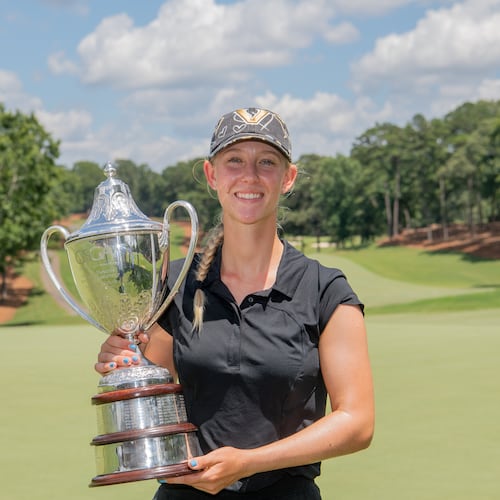Lunch with Vince Dooley is always an education, and that’s meant in the literal sense. Spend an hour with the man and you will, guaranteed, learn something. The latest lesson began with him asking — in his self-deprecating way — if I was aware he’d had an article published in a scholarly journal.
I said I wasn’t. And away we (meaning he) went.
The publication, he said, was in The Georgia Historical Quarterly, the Fall 2014 edition. About here, I was guessing, “Civil War,” knowing that the former Georgia coach and athletic director has spent many a day touring battlefields. Not for the first time, I was wrong.
The title of the article credited to “Vincent J. Dooley” is: “A Year Like No Other: Football on the University of Georgia Campus, 1942.”
I figured it would concern the Rose Bowl-winning Bulldogs of Frank Sinkwich and Charley Trippi, who went 11-1 and who would, retroactively, claim a consensus national championship. (Who did the claiming? Why, Dooley. Years ago, he discovered via documents from the College Football Hall of Fame that those Bulldogs had been voted No. 1 in six of 12 polls — the same number of No. 1s as Ohio State, widely considered the “consensus” champ.)
Dooley’s 25-page article, replete with footnotes, goes deeper than Sinkwich and Trippi. Its premise is that the nation’s two best amateur teams in 1942 — not one but two — were housed at UGA. The other was the U.S. Navy Pre-Flight Skycrackers.
I was aware that sports went on, albeit in a much different way, during World War II. (My dad played baseball in the Army and batted against Ewell Blackwell, who was known as “The Whip,” and who would, as a Cincinnati Red, come within two outs of consecutive no-hitters in 1947.) The Skycrackers, however, were new to me.
So was this. “Bear Bryant was an assistant coach on that team,” Dooley said.
Just after he became Georgia’s coach in December 1963, Dooley and his newly formed staff drove to Texas to pick notable brains. They stopped in Dallas at SMU to meet with athletic director Matty Bell, who coached the great Doak Walker. Bell mentioned that he spent time in Athens during the war as director of fitness for the Pre-Flight school. Then he said: “Bear Bryant was there, too.”
This was a revelation to Dooley, and it became, five decades later, the starting point for his research of the Skycrackers. (In all the years he coached against Bryant, Dooley never asked about his Pre-Flight days.) He found that Bryant, set to become head coach at Arkansas until Pearl Harbor intervened, wasn’t the only Bear on staff: The head coach was Bear Wolf, who would lead the Florida Gators after the war.
As it happened, Bryant was in Athens for the ’42 season but not much longer. Writes Dooley: “Bell ran a tight ship” — pun surely intended — “and did not tolerate behavior unbecoming a naval officer. Apparently, Bell thought Bryant had been guilty of some indiscretion. It was a good lesson for the young, confident and aggressive coach.”
According to Dooley, Bell had Bryant transferred to a troop ship bound for North Africa. In Bryant’s 1974 autobiography, he identifies the ship as the U.S.S. Uruguay and concedes he was seasick “before we got out of the harbor.” There’s no mention of any stint in Athens or any “indiscretion.”
The Quarterly ran two photos to accompany Dooley’s article: One is of Trippi sans helmet with a football under his arm; the other was contributed by Alabama’s Paul Bryant Museum and features the 28-year-old lieutenant in his Navy uniform, the hat not of the houndstooth variety.
About the Skycrackers: They were great. Frank Filchock, coming off his rookie season with the Washington Redskins, was the quarterback. Buster Poole, one of the famous Poole brothers of Ole Miss, was the leading receiver. The best lineman was Bob Suffridge, who was a three-time All-American at Tennessee.
The Skycrackers went 7-1-1, tying North Carolina Pre-Flight and losing 34-0 at LSU. (Dooley suggests that “curtailed or canceled practices due to military duties” might have contributed.) They beat Alabama, which would win the Orange Bowl 35-19 at Legion Field. Two weeks before Auburn dealt the 1942 Georgia Bulldogs their only loss, the Skycrackers beat the Tigers 41-14 in Columbus.
The Bulldogs and the Skycrackers never officially played, alas. They did scrimmage. “They had some great players,” Dooley quotes Trippi, who still lives in Athens, as saying, “even more than we did.”
Those Bulldogs practiced in Sanford Stadium, Dooley writes. The Pre-Flight school built its own practice fields — the same fields off Lumpkin Street used by the latter-day Bulldogs. (Too bad the Navy didn’t spring for an indoor facility, huh?)
AP didn’t include service teams in its poll, but Dooley notes that the James Howell Poll, at season’s end, ranked the Bulldogs No. 1 and the Skycrackers No. 2. His conclusion: “All fans of the Red and Black should take pride in the fact that no university campus — before or since — ever had two highly ranked teams with such an abundance of superstars as did the University of Georgia in 1942.”
Methodology: Dooley spent a year doing research at the UGA library and through various books, and he conducted interviews as the interviewer, which made for a change. “One thing led to another,” he said.
Dooley retired as coach after the 1988 season and ceased being AD in 2004, having been given the gate by school president Michael Adams. Unlike many ex-coaches, Dooley doesn’t play golf. At 82, he’s propelled by the tending of his famous garden and his lifelong curiosity. And he has another writing project afoot.
“It’s about the Civil War,” he said.
About the Author
Keep Reading
The Latest
Featured


